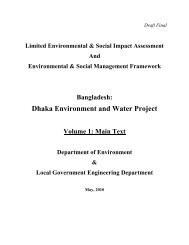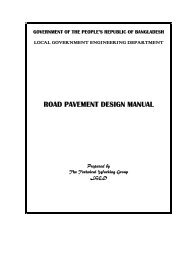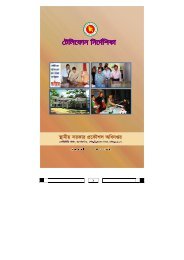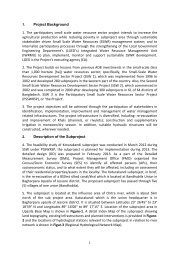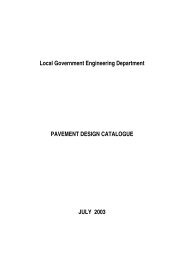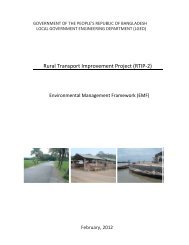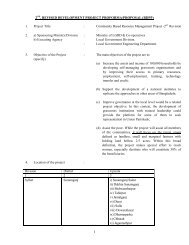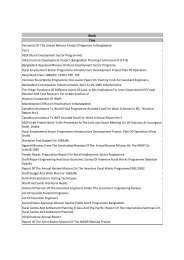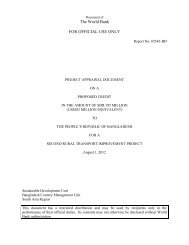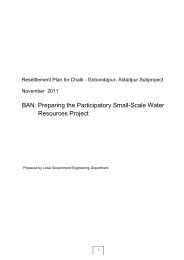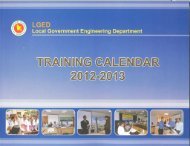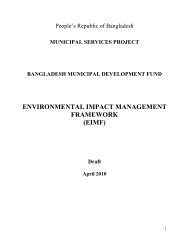Rural Markets and Roads, Khulna Division - LGED
Rural Markets and Roads, Khulna Division - LGED
Rural Markets and Roads, Khulna Division - LGED
You also want an ePaper? Increase the reach of your titles
YUMPU automatically turns print PDFs into web optimized ePapers that Google loves.
Notes on the methods used to evaluate project success (project rating)<br />
Projects (<strong>and</strong> programmes) are evaluated on a six-point scale, the criteria being relevance,<br />
effectiveness, efficiency <strong>and</strong> overarching developmental impact. The ratings are also used to arrive<br />
at a final assessment of a project’s overall developmental efficacy. The scale is as follows:<br />
1 Very good result that clearly exceeds expectations<br />
2 Good result, fully in line with expectations <strong>and</strong> without any significant<br />
shortcomings<br />
3 Satisfactory result – project falls short of expectations but the positive results<br />
dominate<br />
4 Unsatisfactory result – significantly below expectations, with negative results<br />
dominating despite discernible positive results<br />
5 Clearly inadequate result – despite some positive partial results, the negative<br />
results clearly dominate<br />
6 The project has no impact or the situation has actually deteriorated<br />
Ratings 1-3 denote a positive or successful assessment while ratings 4-6 denote a not positive or<br />
unsuccessful assessment<br />
Sustainability is evaluated according to the following four-point scale:<br />
Sustainability level 1 (very good sustainability) The developmental efficacy of the project (positive to<br />
date) is very likely to continue undiminished or even increase.<br />
Sustainability level 2 (good sustainability): The developmental efficacy of the project (positive to<br />
date) is very likely to decline only minimally but remain positive overall. (This is what can normally be<br />
expected).<br />
Sustainability level 3 (satisfactory sustainability): The developmental efficacy of the project (positive<br />
to date) is very likely to decline significantly but remain positive overall. This rating is also assigned if<br />
the sustainability of a project is considered inadequate up to the time of the ex post evaluation but is<br />
very likely to evolve positively so that the project will ultimately achieve positive developmental<br />
efficacy.<br />
Sustainability level 4 (inadequate sustainability): The developmental efficacy of the project is<br />
inadequate up to the time of the ex post evaluation <strong>and</strong> is very unlikely to improve. This rating is also<br />
assigned if the sustainability that has been positively evaluated to date is very likely to deteriorate<br />
severely <strong>and</strong> no longer meet the level 3 criteria.<br />
The overall rating on the six-point scale is compiled from a weighting of all five individual criteria as<br />
appropriate to the project in question. Ratings 1-3 of the overall rating denote a "successful" project<br />
while ratings 4-6 denote an "unsuccessful" project. It should be noted that a project can generally be<br />
considered developmentally “successful” only if the achievement of the project objective<br />
(“effectiveness”), the impact on the overall objective (“overarching developmental impact”) <strong>and</strong> the<br />
sustainability are rated at least “satisfactory” (rating 3).<br />
7



